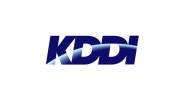In 2016, we will continue to see tectonic shifts in applications, traffic patterns, network architectures and technologies. Changes will be seen in multiple dimensions:
#1: THE VAST MAJORITY OF TRAFFIC WILL STAY IN METRO
We are about to enter a major shift in traffic patterns that will be more metro-centric and application-centric. New traffic dynamics will impact the architecture and design of metro networks that will require Operators to switch and transport higher capacities of data locally within metro backbones, in many cases even in the last mile... We will see the final shifts in convergence of wireless and wireline networks, more tightly integrated packet and optical technologies with application-awareness.
Zeev Draer,
VP Strategic Marketing,
MRV Communications

#2: DATA CENTERS AND CONTENT WILL BE CLOSER TO CUSTOMERS
Content will continue to be "king". The flux of data will not stop and will just accelerate through 2016. Proliferation of data centers in metro regions will enable customers to receive better quality of experience through faster response of real-time applications, specifically video content. 4K Ultra-HD content will continue to strain existing optical networks and this will lead to the adoption of 100Gbps and Terabit capacities for powering connectivities between/to data centers, especially within metro regions.
2016 Trends and Outlook Polls
#3: AGILE AND ELASTIC ARCHITECTURES THROUGH ADOPTION OF SDN/NFV TECHNOLOGIES
The SDN/NFV technologies and architectures aim at the most radical changes ever witnessed since the beginning of the Internet age. The impact is so radical, that it transcends changes in technology and architectures to influencing and shifting our mindsets. In 2016, we will see more application and information-centricity in metro networks. This is to imply that the cloud-model of "pay-per-use" will start to dominate more and more communication providers. Billing per service/application/usage will start to be the new reality that will require more agile and elastic metro networks. The new paradigm of SDN/NFV is finally moving towards more practical maturity and will move from whiteboards to commercial implementations, translating into new dynamic, self-optimized and programmable networks. 2016 will be the watermark in this evolution that will take years, but in our new dynamic world, we might be very surprised by the pace at which these changes happen …
#4: BUSINESS MODELS WILL CONTINUE TO SHAKE THE TELECOM INDUSTRY
The blurring lines between the types of service providers will continue to change the industry dynamics. 2015 has been a busy time for mergers and acquisitions. But what might be even more remarkable is that the M&A market is just getting warmed up, and 2016 might see these activities intensifying to some of the highest levels since the financial crisis in 2008. Aggressive competition from Over-the-Top content providers is forcing traditional telecoms operators that used to focus on pre-defined connectivity models to shift to more efficient automated cloud-centric models. Business models will continue to be highly impacted by one simple fact - customers will be loyal to the service and not to a specific provider. Strategic decisions, thus, will not just impact businesses, they impact the industry as a whole.
About The Author:
Zeev Draer leads technical marketing and marketing communications at MRV. Zeev brings over 25 years of experience in senior roles in the ICT industry, with expertise in business development, product and project management, and network solutions. Prior to his role as VP of strategic marketing, Zeev served as VP and product line manager at MRV. In this position, he was responsible for leading and promoting MRV’s flagship Carrier Ethernet product lines in the Metro Ethernet access market. Zeev is a key visionary and driving force in MRV’s marketing strategy and positioning.



















